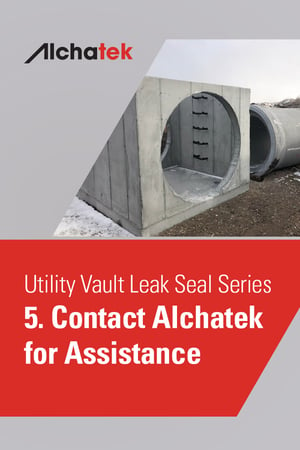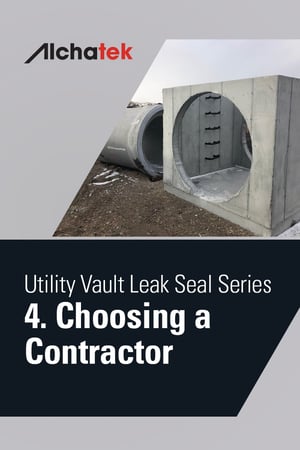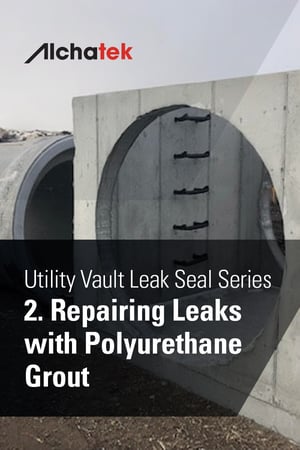
 For municipalities, the adoption of polyurethane grout represents a commitment to cost efficiency, sustainability, and long-term planning. The following outlines the steps municipalities can take to effectively implement polyurethane grout solutions, ensuring that technical proficiency goes hand-in-hand with the economic benefits.
For municipalities, the adoption of polyurethane grout represents a commitment to cost efficiency, sustainability, and long-term planning. The following outlines the steps municipalities can take to effectively implement polyurethane grout solutions, ensuring that technical proficiency goes hand-in-hand with the economic benefits.
Training and Technical Support for Maintenance Crews
Key to successful implementation is ensuring that maintenance crews are well-trained in the use of polyurethane grout. Comprehensive training programs are essential, covering everything from material handling to application techniques. Moreover, ongoing technical support is crucial for troubleshooting and optimizing the use of polyurethane grout in various repair scenarios.
Partnering with the Right Suppliers
Choosing the right supplier is not just about product quality; it's about finding a partner who can provide technical expertise and reliable supply chains. Municipalities should seek suppliers with a proven track record of supporting large-scale infrastructure projects and who can offer consistent product availability via distribution.
Nationwide Product Availability through Distributor Networks
A robust distributor network is essential for ensuring that municipalities have access to polyurethane grout products whenever they are needed. This requires a coordinated effort to establish partnerships with distributors that can handle demand and provide timely deliveries across various locations.
Contact Alchatek Today
As municipalities look to the future, integrating polyurethane grout solutions for infrastructure repair is not only about fixing current problems but also about investing in the longevity and reliability of their infrastructure.
Call 404-618-0438 or fill out this form to contact Alchatek today!




 In the realm of wastewater management, the conversation around repair methods is often punctuated by the concern for cost. For municipal managers and administrators, understanding the financial implications of infrastructure repair decisions is as crucial as comprehending their technical benefits.
In the realm of wastewater management, the conversation around repair methods is often punctuated by the concern for cost. For municipal managers and administrators, understanding the financial implications of infrastructure repair decisions is as crucial as comprehending their technical benefits.
 Municipal managers and administrators may be interested in the ways in which polyurethane grout can be strategically applied to different structures within the wastewater system—manholes, pipes, and lift stations—to ensure efficient, cost-effective operations.
Municipal managers and administrators may be interested in the ways in which polyurethane grout can be strategically applied to different structures within the wastewater system—manholes, pipes, and lift stations—to ensure efficient, cost-effective operations.
 In the quest to maintain robust wastewater infrastructure, polyurethane grout emerges as a material that exhibits superior sealing capabilities, flexibility, and longevity. Its unique chemical structure allows it to expand upon contact with water, creating an effective and durable seal that traditional materials cannot match.
In the quest to maintain robust wastewater infrastructure, polyurethane grout emerges as a material that exhibits superior sealing capabilities, flexibility, and longevity. Its unique chemical structure allows it to expand upon contact with water, creating an effective and durable seal that traditional materials cannot match.
 Wastewater management is an essential component of municipal operations, pivotal for public health and environmental protection. The intricate network of sewers, manholes, and lift stations must always function optimally. Ensuring the integrity of this infrastructure is not just about maintenance; it’s about safeguarding the community's well-being.
Wastewater management is an essential component of municipal operations, pivotal for public health and environmental protection. The intricate network of sewers, manholes, and lift stations must always function optimally. Ensuring the integrity of this infrastructure is not just about maintenance; it’s about safeguarding the community's well-being.
 The importance of properly sealing leaks in utility vaults cannot be overstated. Utilizing the right materials and following best practices are fundamental. However, the process doesn't stop there; selecting the right contractor is a crucial decision that directly impacts the quality and longevity of your repair.
The importance of properly sealing leaks in utility vaults cannot be overstated. Utilizing the right materials and following best practices are fundamental. However, the process doesn't stop there; selecting the right contractor is a crucial decision that directly impacts the quality and longevity of your repair.
 The quality of workmanship directly impacts the effectiveness and longevity of the repair, making it imperative to choose a contractor wisely.
The quality of workmanship directly impacts the effectiveness and longevity of the repair, making it imperative to choose a contractor wisely.
 Leak sealing in utility vaults is a critical aspect of maintaining infrastructure integrity. Various methods and materials are available for this purpose, but they are not all equal in terms of performance.
Leak sealing in utility vaults is a critical aspect of maintaining infrastructure integrity. Various methods and materials are available for this purpose, but they are not all equal in terms of performance.
 Regarding water infiltration in utility vaults, precast joints often serve as weak links. Conventional methods like cementitious grouting offer temporary solutions but often fail to withstand structural movements or shifting over time, resulting in a reoccurrence of leaks.
Regarding water infiltration in utility vaults, precast joints often serve as weak links. Conventional methods like cementitious grouting offer temporary solutions but often fail to withstand structural movements or shifting over time, resulting in a reoccurrence of leaks.
 Utility vaults are critical components of modern infrastructure, providing secure containment for electrical, telecommunications, or other equipment. They are designed to be robust and durable. However, one common but often overlooked issue is the occurrence of leaks, most commonly found in precast joints and pipe penetrations.
Utility vaults are critical components of modern infrastructure, providing secure containment for electrical, telecommunications, or other equipment. They are designed to be robust and durable. However, one common but often overlooked issue is the occurrence of leaks, most commonly found in precast joints and pipe penetrations.